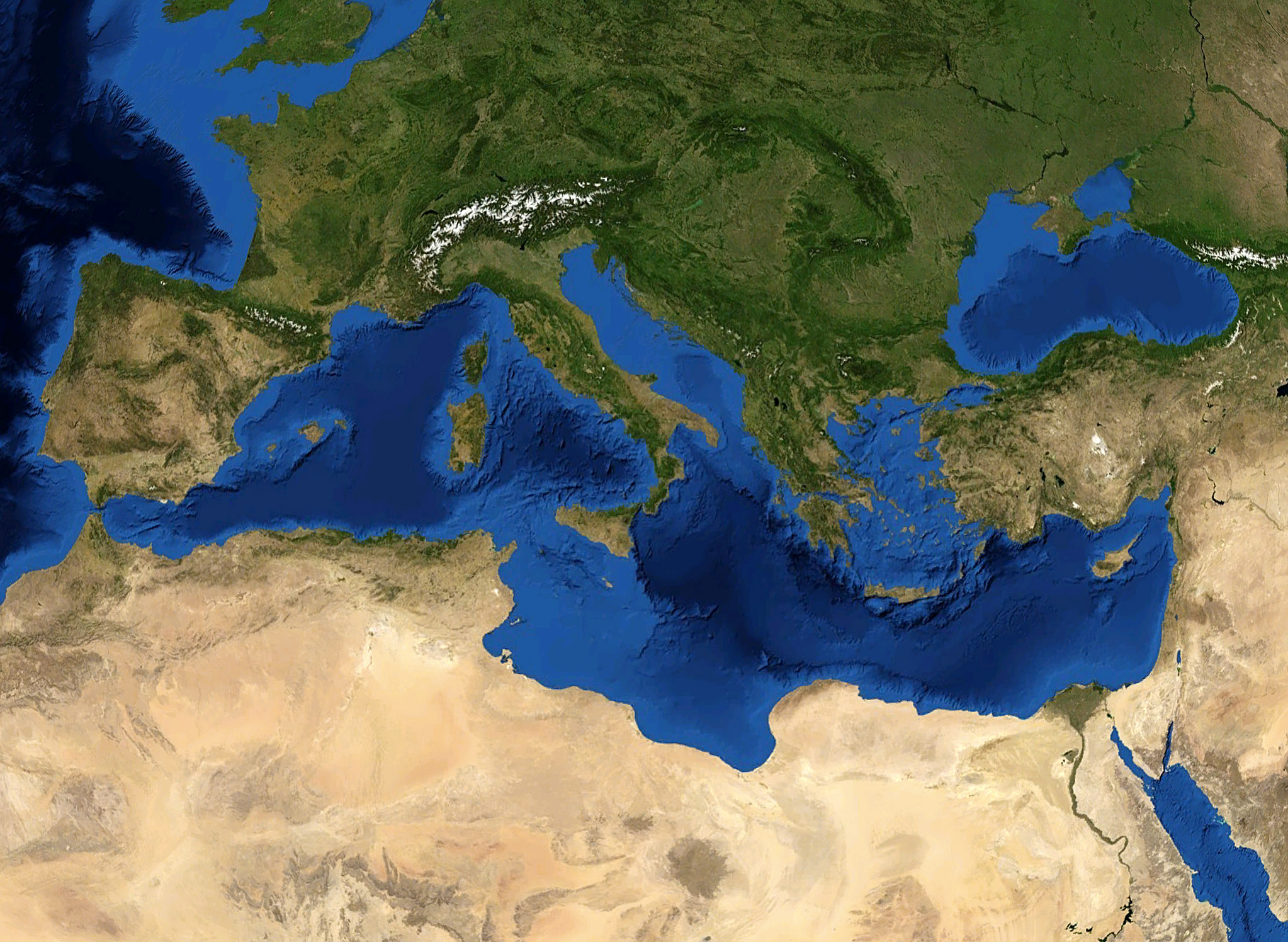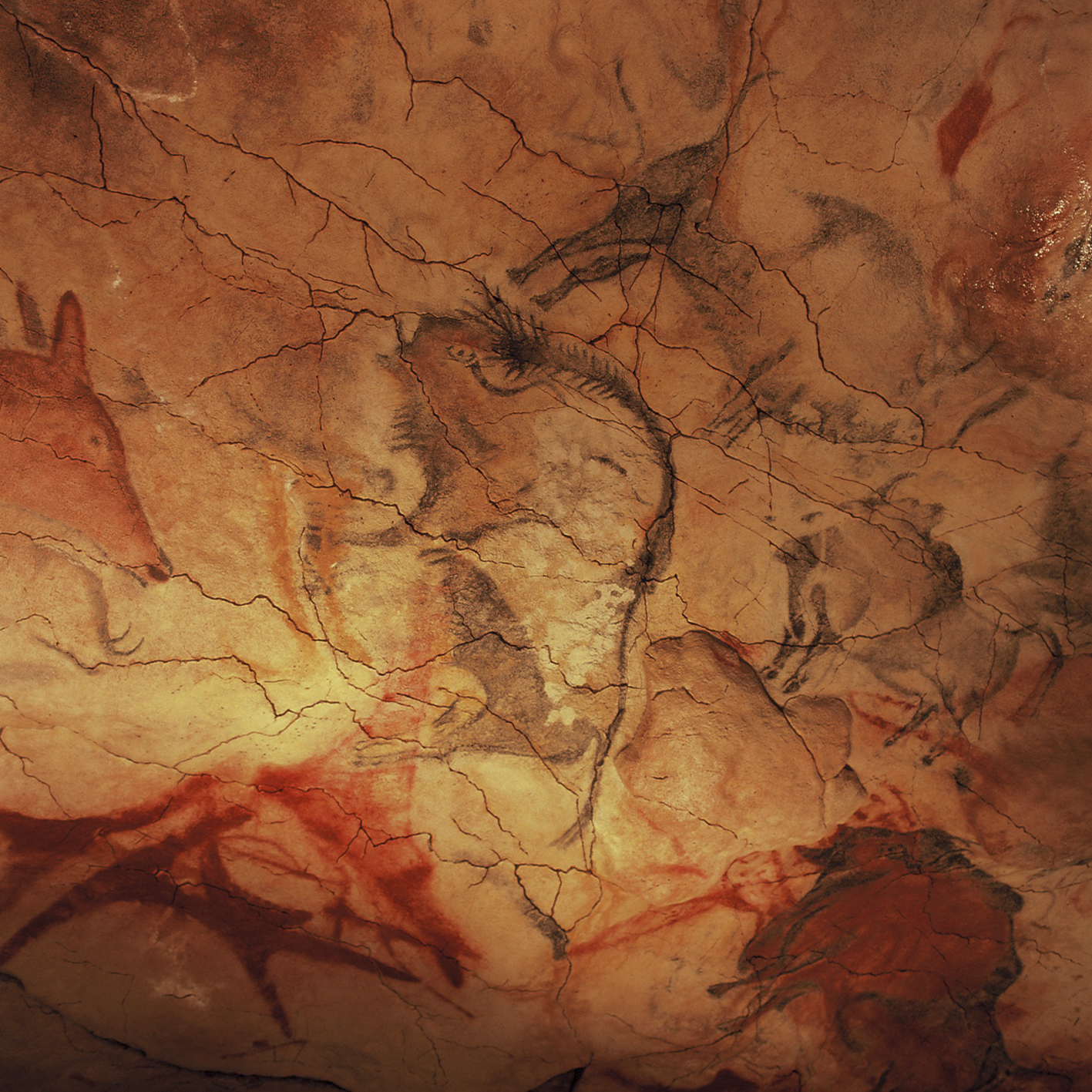|
Epi-Cardial
Cardium pottery or Cardial ware is a Neolithic decorative style that gets its name from the imprinting of the clay with the heart-shaped shell of the ''Corculum cardissa'', a member of the cockle family Cardiidae. These forms of pottery are in turn used to define the Neolithic culture which produced and spread them, commonly called the "Cardial culture". The alternative name, impressed ware, is given by some archaeologists to define this culture, because impressions can be made with sharp objects other than cockle shells, such as a nail or comb. Impressed pottery is much more widespread than the Cardial. Impressed ware is found in the zone "covering Italy to the Ligurian coast" as distinct from the more western Cardial extending from Provence to western Portugal. The sequence in prehistoric Europe has traditionally been supposed to start with widespread Cardial ware, and then to develop other methods of impression locally, termed "epi-Cardial". However the widespread Cardial ... [...More Info...] [...Related Items...] OR: [Wikipedia] [Google] [Baidu] |
Southern Europe
Southern Europe is also known as Mediterranean Europe, as its geography is marked by the Mediterranean Sea. Definitions of southern Europe include some or all of these countries and regions: Albania, Andorra, Bosnia and Herzegovina, Bulgaria, Croatia, Cyprus, Gibraltar, Greece, Italy, Kosovo, Malta, Monaco, Montenegro, North Macedonia, Portugal, San Marino, Serbia, Slovenia, southern France, Wallachia, southern Romania, Spain, Turkey, and Vatican City. Southern Europe is focused on the three peninsulas located in the extreme south of the European continent. These are the Iberian Peninsula, the Italian Peninsula, and the Balkans, Balkan Peninsula. These three peninsulas are separated from the rest of Europe by towering mountain ranges, respectively by the Pyrenees, the Alps and the Balkan Mountains. The location of these peninsulas in the heart of the Mediterranean Sea, as well as their mountainous reliefs, provide them with very different types of climates (mainly subtropics, ... [...More Info...] [...Related Items...] OR: [Wikipedia] [Google] [Baidu] |
Prehistoric Iberia
Prehistory in the Iberian Peninsula, Iberian peninsula begins with the arrival of the first ''Homo'' genus representatives from Africa, which may range from 1.5 million years (Year#SI prefix multipliers, Ma) ago to 1.25 Ma ago, depending on the Archaeological science#Dating techniques, dating technique employed, so it is set at 1.3 Ma ago for convenience. The end of Iberian prehistory coincides with the first entrance of the Roman people, Roman army into the peninsula, in 218 Before Christ, BC, which led to the progressive dissolution of Pre-Roman People of the Iberian Peninsula, pre-Roman peoples in Roman culture. This end date is also conventional, since Paleohispanic scripts, pre-Roman writing systems can be traced to as early as 5th century BC. Overview Prehistory in Iberia spans around 60% of the Quaternary, with written history occupying just 0.08%. For the rest 40%, it was uninhabited by humans. The Pleistocene, first Geologic time scale#Divisions of geologic time, ... [...More Info...] [...Related Items...] OR: [Wikipedia] [Google] [Baidu] |
Atlantic
The Atlantic Ocean is the second largest of the world's five oceanic divisions, with an area of about . It covers approximately 17% of Earth's surface and about 24% of its water surface area. During the Age of Discovery, it was known for separating the New World of the Americas (North America and South America) from the Old World of Afro-Eurasia (Africa, Asia, and Europe). Through its separation of Afro-Eurasia from the Americas, the Atlantic Ocean has played a central role in the development of human society, globalization, and the histories of many nations. While the Norse were the first known humans to cross the Atlantic, it was the expedition of Christopher Columbus in 1492 that proved to be the most consequential. Columbus's expedition ushered in an age of exploration and colonization of the Americas by European powers, most notably Portugal, Spain, France, and the United Kingdom. From the 16th to 19th centuries, the Atlantic Ocean was the center of both an eponymou ... [...More Info...] [...Related Items...] OR: [Wikipedia] [Google] [Baidu] |
Adriatic
The Adriatic Sea () is a body of water separating the Italian Peninsula from the Balkans, Balkan Peninsula. The Adriatic is the northernmost arm of the Mediterranean Sea, extending from the Strait of Otranto (where it connects to the Ionian Sea) to the northwest and the Po Valley. The countries with coasts on the Adriatic are Albania, Bosnia and Herzegovina, Croatia, Italy, Montenegro, and Slovenia. The Adriatic contains more than 1,300 islands, mostly located along its eastern coast. It is divided into three basins, the northern being the shallowest and the southern being the deepest, with a maximum depth of . The prevailing currents flow counterclockwise from the Strait of Otranto. Tidal movements in the Adriatic are slight, although acqua alta, larger amplitudes occur occasionally. The Adriatic's salinity is lower than the Mediterranean's because it collects a third of the fresh water flowing into the Mediterranean, acting as a dilution basin. The surface water temperatures ... [...More Info...] [...Related Items...] OR: [Wikipedia] [Google] [Baidu] |
Mediterranean
The Mediterranean Sea ( ) is a sea connected to the Atlantic Ocean, surrounded by the Mediterranean basin and almost completely enclosed by land: on the east by the Levant in West Asia, on the north by Anatolia in West Asia and Southern Europe, on the south by North Africa, and on the west almost by the Morocco–Spain border. The Mediterranean Sea covers an area of about , representing 0.7% of the global ocean surface, but its connection to the Atlantic via the Strait of Gibraltar—the narrow strait that connects the Atlantic Ocean to the Mediterranean Sea and separates the Iberian Peninsula in Europe from Morocco in Africa—is only wide. Geological evidence indicates that around 5.9 million years ago, the Mediterranean was cut off from the Atlantic and was partly or completely desiccated over a period of some 600,000 years during the Messinian salinity crisis before being refilled by the Zanclean flood about 5.3 million years ago. The sea was an important rout ... [...More Info...] [...Related Items...] OR: [Wikipedia] [Google] [Baidu] |
Pottery
Pottery is the process and the products of forming vessels and other objects with clay and other raw materials, which are fired at high temperatures to give them a hard and durable form. The place where such wares are made by a ''potter'' is also called a ''pottery'' (plural ''potteries''). The definition of ''pottery'', used by the ASTM International, is "all fired ceramic wares that contain clay when formed, except technical, structural, and refractory products". End applications include tableware, ceramic art, decorative ware, toilet, sanitary ware, and in technology and industry such as Insulator (electricity), electrical insulators and laboratory ware. In art history and archaeology, especially of ancient and prehistoric periods, pottery often means only vessels, and sculpture, sculpted figurines of the same material are called terracottas. Pottery is one of the Timeline of historic inventions, oldest human inventions, originating before the Neolithic, Neolithic period, w ... [...More Info...] [...Related Items...] OR: [Wikipedia] [Google] [Baidu] |
Prehistoric Europe
Prehistoric Europe refers to Europe before the start of written records, beginning in the Lower Paleolithic. As history progresses, considerable regional unevenness in cultural development emerges and grows. The region of the eastern Mediterranean is, due to its geographic proximity, greatly influenced and inspired by the classical Middle Eastern civilizations, and adopts and develops the earliest systems of communal organization and writing. The Histories of Herodotus (from around 440 BC) is the oldest known European text that seeks to systematically record traditions, public affairs and notable events. Overview Widely dispersed, isolated finds of individual fossils of bone fragments (Atapuerca, Mauer mandible), stone artifacts or assemblages suggest that during the Lower Paleolithic, spanning from 3 million until 300,000 years ago, palaeo-human presence was rare and typically separated by thousands of years. The karstic region of the Atapuerca Mountains in Spain repre ... [...More Info...] [...Related Items...] OR: [Wikipedia] [Google] [Baidu] |
Portugal
Portugal, officially the Portuguese Republic, is a country on the Iberian Peninsula in Southwestern Europe. Featuring Cabo da Roca, the westernmost point in continental Europe, Portugal borders Spain to its north and east, with which it shares Portugal-Spain border, the longest uninterrupted border in the European Union; to the south and the west is the North Atlantic Ocean; and to the west and southwest lie the Macaronesia, Macaronesian archipelagos of the Azores and Madeira, which are the two Autonomous Regions of Portugal, autonomous regions of Portugal. Lisbon is the Capital city, capital and List of largest cities in Portugal, largest city, followed by Porto, which is the only other Metropolitan areas in Portugal, metropolitan area. The western Iberian Peninsula has been continuously inhabited since Prehistoric Iberia, prehistoric times, with the earliest signs of Human settlement, settlement dating to 5500 BC. Celts, Celtic and List of the Pre-Roman peoples of the Iberia ... [...More Info...] [...Related Items...] OR: [Wikipedia] [Google] [Baidu] |
Provence
Provence is a geographical region and historical province of southeastern France, which stretches from the left bank of the lower Rhône to the west to the France–Italy border, Italian border to the east; it is bordered by the Mediterranean Sea to the south. It largely corresponds with the modern administrative Regions of France, region of Provence-Alpes-Côte d'Azur and includes the Departments of France, departments of Var (department), Var, Bouches-du-Rhône, Alpes-de-Haute-Provence, as well as parts of Alpes-Maritimes and Vaucluse.''Le Petit Robert, Dictionnaire Universel des Noms Propres'' (1988). The largest city of the region and its modern-day capital is Marseille. The Ancient Rome, Romans made the region the first Roman province beyond the Alps and called it ''Provincia Romana'', which evolved into the present name. Until 1481 it was ruled by the List of rulers of Provence, counts of Provence from their capital in Aquae Sextiae (today Aix-en-Provence), then became ... [...More Info...] [...Related Items...] OR: [Wikipedia] [Google] [Baidu] |
Cardiidae
A cockle is an edible marine bivalve mollusc. Although many small edible bivalves are loosely called cockles, true cockles are species in the family Cardiidae.>MolluscaBase eds. (2022). MolluscaBase. Cardiidae Lamarck, 1809. Accessed through: World Register of Marine Species on 2022-02-09/ref> True cockles live in sandy, sheltered beaches throughout the world. The distinctive rounded shells are bilaterally symmetrical, and are heart-shaped when viewed from the end. Numerous radial, evenly spaced ribs are a feature of the shell in most but not all genera (for an exception, see the genus '' Laevicardium'', the egg cockles, which have very smooth shells). The shell of a cockle is able to close completely (i.e., there is no "gap" at any point around the edge). Though the shell of a cockle may superficially resemble that of a scallop because of the ribs, cockles can be distinguished from scallops morphologically in that cockle shells lack "auricles" (triangular ear-shaped protrusio ... [...More Info...] [...Related Items...] OR: [Wikipedia] [Google] [Baidu] |
Corculum Cardissa
''Corculum cardissa'', the heart cockle, is a species of marine Bivalvia, bivalve Mollusca, mollusc in the Family (biology), family Cardiidae. It is found in the Indo-Pacific region. It has a Symbiosis, symbiotic relationship with dinoflagellates (zooxanthellae), which live within its tissues. Description The two Bivalve shell, valves of ''Corculum cardissa'' are unequal in size and often asymmetric. Their shape is very variable but viewed from above, the outline is roughly heart shaped which gives the molluscs their common name. Viewed from the side the shape bears a resemblance to the shell of a cockle (''Cerastoderma'' spp.). In some specimens the posterior valve is nearly flat or has a slight hump. In others it is more rounded. The boundary of the valves is usually flat but is sometimes somewhat sinuous. Smaller shells tend to be elongated; larger shells are more rounded and the growth rings can be seen clearly. The shell is thin and translucent, particularly the upper side. ... [...More Info...] [...Related Items...] OR: [Wikipedia] [Google] [Baidu] |






